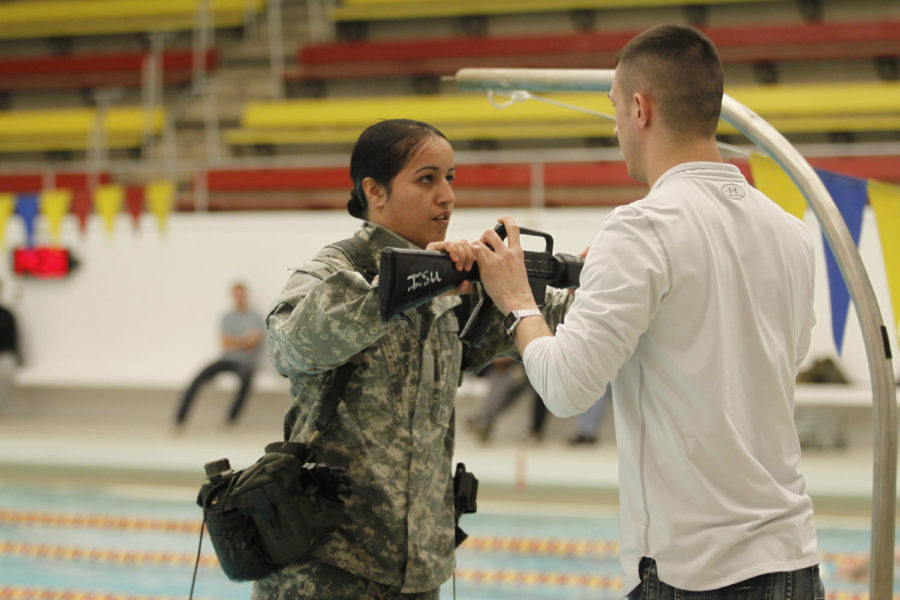Army ROTC to complete Combat Water Survival Training
February 20, 2013
This week the Beyer Hall pool will be kept busy by the ISU Army ROTC cadets for their Combat Water Survival Training lab.
On Feb. 20, approximately 100 Army cadets will pack into the Beyer Hall pool to try to complete the training lab held twice a year — once each semester.
“Combat Water Survival Training is a commissioning requirement, so a cadet has to pass this in order to commission and become an officer in the army,” said Lt. Col. Richard Smith, professor and chairman of military science and tactics.
Even though everyone has to pass this training in order to become an officer, Combat Water Survival Training is still considered to be one of the more fun labs to partake in.
“We try to make it fun, and make a big deal out of it,” Smith said, “The cadets buy pizza afterward and have some fun with it because it’s not your typical lab.”
Senior cadets run the Combat Water Survival Training. Nine senior cadets will be in charge of the five stations that comprise the training lab. Along with the nine senior cadets, there will be at least two demonstrators for the stations, and five safety monitors along with the lifeguards already at the pool.
The five stations that make up the training are the water tread, gear ditch, 15-meter swim, diving board and flotation device.
At the water tread station, cadets have to tread water for a full five minutes, keeping their head above water the entire time.
For the gear ditch station, cadets jump in the pool with their rifle and load-bearing equipment. Underwater, cadets have to remove all of their equipment from their body and if any equipment is left on when they come up from the water, they have to redo the station.
The 15-meter swim is a swim across the short side of the pool that the cadets have to make, fully clothed, with their rifle.
At the diving board station, cadets are walked to the edge of the 5-meter diving board blindfolded by a senior cadet. The cadet then has to step off the edge of the diving board blindfolded, holding their rifle out with their arms extended.
“When they step off we like to have them sound off with their favorite branch of the army, to try and give them something to build a little confidence because it’s just high enough where you have that little quarter second of a gut turn,” said Senior Cadet James Salerno, senior in interdisciplinary studies.
At the flotation device station, cadets learn how to make an improvised flotation device out of the trousers of their combat uniforms.
“Out of all the stations that we do, [the flotation device station] is probably one of the more useful ones,” Salerno said, “if they end up in the water, it’s something really easy to learn and it’s something they can do, and it’s been proven to save lives.”
However, this training lab could impose a few issues to a cadet that doesn’t have much experience in water, or has a fear of it.
“I am not at all an experienced swimmer — unless you count standing in three feet of water in a pool during the summer as experience — prior to participating in this lab I had never done the things conducted,” said Isabella Hamby, junior in psychology.
The supervision and help provided at Combat Water Survival Training does help put a damper on some of the fears that may creep up on a cadet during this training.
“What I expect to gain the most out of this training is confidence. I’m not a huge fan of water or heights, so each time I survive this lab I feel pretty good,” Hamby said, “I’ve gotten more excited over the years for it, as I realize I won’t die in a pool surrounded by lifeguards.”

















